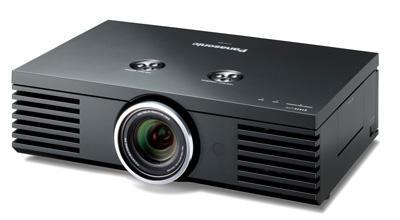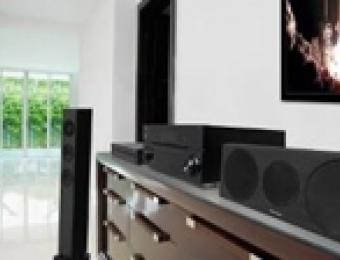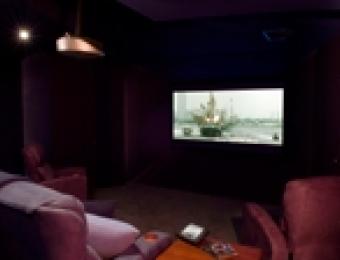
What is a projector?
A projector is a machine designed to 'project' a video image onto a wall-mounted projector screen or other flat surface. There are wide range different projectors available, and which type you choose will depend on your needs. Some of the different types include home cinema projectors, pocket projectors, portable projectors and office projectors.
Projectors offer two big advantages over other display technologies:
- They allow you to display a huge image
- They don't need to occupy any space when they're not being used.
Projectors are a particularly economical choice for home cinema setups, especially when compared to large HDTVs, which cost many thousands of dollars for sizes over 50 inches.
How are projectors used?
In the home, projectors are mainly used for home cinema applications, but can also be used for home office setups, computer setups, or video games. When choosing a projector, it's important to select one that's suited to your purposes.
Home cinema projectors - Home cinema projectors offer full HD 1080p video, and are an affordable and practical alternative to a very large HDTV. Home cinema projectors normally require a purpose-built projector screen to ensure the best possible picture, and may even feature speakers behind the projector screen to provide a convincing audio effect.
Office projectors - For applications where high-definition video isn't necessary, an office projector offers another alternative to an HDTV. These types of projectors generally offer a lower resolution and lower quality image than a home cinema projector, but may be suitable for home office work.
Portable projectors - Portable projectors are also becoming increasingly more practical, and may serve as a viable alternative for casual viewing or computer use. These types of projectors are also likely to have a lower resolution and fewer capabilities than a full-blown home cinema projector. As a side note, many cell-phone manufacturers are also now working on integrating projector technologies into their handsets.
What variations exist?
There are two main types of projectors on the market: DLP (Digital Light Processing) and 3LCD (Liquid Crystal Display, or 3LCD). The practical differences between the two, and the image quality you can achieve with each depends very much on the specific model in question. , whereas DLP projectors are said to have higher contrast ratios, and therefore greater 'crispness' than LCDs.
- 3LCD technology works LCD technology. The projector uses three separate LCD screens to filter red, green and blue light in different parts of the display in order to create the final image. This technology, in different versions, is also used in LG's LCoS projector technology, JVC's D-ILA technology and Sony's SXRD projectors. 3LCD is generally acknowledged to give a brighter image and better colour rendition.
- DLP projectors use a proprietary system which employs an array of tiny mirrors set into what's known as a DMD (Digital Micromirror Device). The system projects light onto these mirrors using a colour wheel, alternating between red, green and blue to create a full-colour image. Three-chip DLP projectors which employ a separate chip for each image channel offer the best image quality, but are orders of magnitude more expensive than the single-chip alternatives.
What type of projector is best for home cinema?
This is a difficult question to answer, mostly because it comes down to your budget. Projectors can cost anywhere between a few hundred dollars to over a hundred thousand dollars, for a system that's effectively on par with professional cinema gear.
Three chip DLP projectors are very expensive, but are said to offer outstanding results. Likewise, three-chip D-ILA technology, while also relatively expensive, is capable of incredibly high resolutions and outstanding image quality. LCoS systems, while a bit more expensive than single-chip DLP and conventional 3LCD projectors, are also said to offer a superior image.
Modern DLP and 3LCD projectors themselves are sufficient for most people's needs, and the difference between the two at this stage largely depends on the model you're looking at. In various situations, each of these technologies may produce some subtle artefacts which detract from the quality of the projected image, and it's important that you understand what you're buying and how it's set up.
If you are planning on buying a serious projector, you should take the time to consult a custom installer, who can advise on a model to suit your needs.
What are the alternatives?
Projectors aren't necessarily suitable for all applications - particularly when there's likely to be too much light in the room, where mounting a projector would be impossible, or where you really don't have the space to make it a viable option. In these cases, an HDTV is the obvious alternative.



